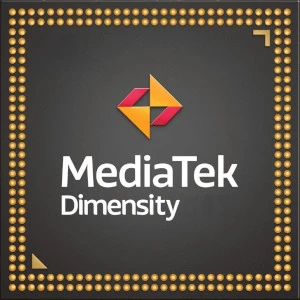MediaTek Dimensity 700 vs Unisoc Tiger T612
The Unisoc Tiger T612 and MediaTek Dimensity 700 are two processors with notable specifications. Let's compare them in terms of CPU cores and architecture, number of cores, instruction set, lithography, and TDP.
In terms of CPU cores and architecture, the Unisoc Tiger T612 is equipped with 2 Cortex-A75 cores clocked at 1.8 GHz and 6 Cortex-A55 cores also clocked at 1.8 GHz. On the other hand, the MediaTek Dimensity 700 features 2 Cortex-A76 cores clocked at 2.2 GHz and 6 Cortex-A55 cores clocked at 2 GHz. From this perspective, the Dimensity 700 has more powerful A76 cores compared to the Tiger T612's A75 cores.
Both processors have 8 cores in total, offering a similar level of multitasking capability. The instruction set for both processors is ARMv8.2-A, ensuring compatibility with a variety of software and applications.
Moving on to lithography, the Unisoc Tiger T612 has a 12 nm lithography, while the MediaTek Dimensity 700 boasts a more advanced 7 nm lithography. A lower lithography generally indicates a more power-efficient and potentially faster processor.
Both processors have a thermal design power (TDP) of 10 watts, which suggests similar power consumption and thermal performance.
In conclusion, while the Unisoc Tiger T612 and MediaTek Dimensity 700 have some similarities such as the number of cores, instruction set, and TDP, there are differences worth noting. The Dimensity 700 has more powerful A76 cores, a more advanced 7 nm lithography, which may result in better power efficiency and potentially superior performance. However, the Tiger T612 offers a combination of A75 and A55 cores. Overall, the choice between these processors depends on specific requirements and the desired balance between power, efficiency, and cost-effectiveness.
In terms of CPU cores and architecture, the Unisoc Tiger T612 is equipped with 2 Cortex-A75 cores clocked at 1.8 GHz and 6 Cortex-A55 cores also clocked at 1.8 GHz. On the other hand, the MediaTek Dimensity 700 features 2 Cortex-A76 cores clocked at 2.2 GHz and 6 Cortex-A55 cores clocked at 2 GHz. From this perspective, the Dimensity 700 has more powerful A76 cores compared to the Tiger T612's A75 cores.
Both processors have 8 cores in total, offering a similar level of multitasking capability. The instruction set for both processors is ARMv8.2-A, ensuring compatibility with a variety of software and applications.
Moving on to lithography, the Unisoc Tiger T612 has a 12 nm lithography, while the MediaTek Dimensity 700 boasts a more advanced 7 nm lithography. A lower lithography generally indicates a more power-efficient and potentially faster processor.
Both processors have a thermal design power (TDP) of 10 watts, which suggests similar power consumption and thermal performance.
In conclusion, while the Unisoc Tiger T612 and MediaTek Dimensity 700 have some similarities such as the number of cores, instruction set, and TDP, there are differences worth noting. The Dimensity 700 has more powerful A76 cores, a more advanced 7 nm lithography, which may result in better power efficiency and potentially superior performance. However, the Tiger T612 offers a combination of A75 and A55 cores. Overall, the choice between these processors depends on specific requirements and the desired balance between power, efficiency, and cost-effectiveness.
AnTuTu 10
Total Score
GeekBench 6 Single-Core
Score
GeekBench 6 Multi-Core
Score
CPU cores and architecture
| Architecture | 2x 2.2 GHz – Cortex-A76 6x 2 GHz – Cortex-A55 |
2x 1.8 GHz – Cortex-A75 6x 1.8 GHz – Cortex-A55 |
| Number of cores | 8 | 8 |
| Instruction Set | ARMv8.2-A | ARMv8.2-A |
| Lithography | 7 nm | 12 nm |
| TDP | 10 Watt | 10 Watt |
Memory (RAM)
| Max amount | up to 12 GB | up to 8 GB |
| Memory type | LPDDR4X | LPDDR4X |
| Memory frequency | 2133 MHz | 1600 MHz |
| Memory-bus | 2x16 bit | 2x16 bit |
Storage
| Storage specification | UFS 2.2 | UFS 2.2 |
Graphics
| GPU name | Mali-G57 MP2 | Mali-G57 MP1 |
| GPU Architecture | Mali Valhall | Mali Valhall |
| GPU frequency | 950 MHz | 650 MHz |
| Execution units | 2 | 1 |
| Shaders | 32 | 16 |
| DirectX | 12 | 12 |
| OpenCL API | 2.1 | 2.1 |
| OpenGL API | ES 3.2 | ES 3.2 |
| Vulkan API | 1.2 | 1.2 |
Camera, Video, Display
| Max screen resolution | 2520x1080@90Hz | 2400x1080 |
| Max camera resolution | 1x 64MP, 2x 16MP | 1x 50MP |
| Max Video Capture | 2K@30FPS | FullHD@30fps |
| Video codec support | H.264 (AVC) H.265 (HEVC) VP9 |
H.264 (AVC) H.265 (HEVC) VP8 VP9 |
Wireless
| 4G network | Yes | Yes |
| 5G network | Yes | Yes |
| Peak Download Speed | 2.77 Gbps | 0.3 Gbps |
| Peak Upload Speed | 1.2 Gbps | 0.1 Gbps |
| Wi-Fi | 5 (802.11ac) | 5 (802.11ac) |
| Bluetooth | 5.1 | 5.0 |
| Satellite navigation | BeiDou GPS Galileo GLONASS NavIC QZSS |
BeiDou GPS Galileo GLONASS |
Supplemental Information
| Launch Date | 2021 Quarter 1 | 2022 January |
| Partnumber | MT6833V/ZA, MT6833V/NZA | T612 |
| Vertical Segment | Mobiles | Mobiles |
| Positioning | Mid-end | Mid-end |
Popular comparisons:
1
Qualcomm Snapdragon 450 vs MediaTek Helio A25
2
MediaTek Helio G85 vs Samsung Exynos 8895
3
MediaTek Dimensity 8020 vs Qualcomm Snapdragon 695
4
Apple A17 Pro vs Qualcomm Snapdragon 685
5
Unisoc Tiger T620 vs HiSilicon Kirin 980
6
MediaTek Dimensity 8000 vs MediaTek Dimensity 8300
7
Samsung Exynos 9825 vs MediaTek Dimensity 700
8
Qualcomm Snapdragon 8s Gen 4 vs MediaTek Dimensity 8100
9
Google Tensor G4 vs Unisoc Tiger T615
10
MediaTek Helio P95 vs Unisoc Tanggula T760 5G

